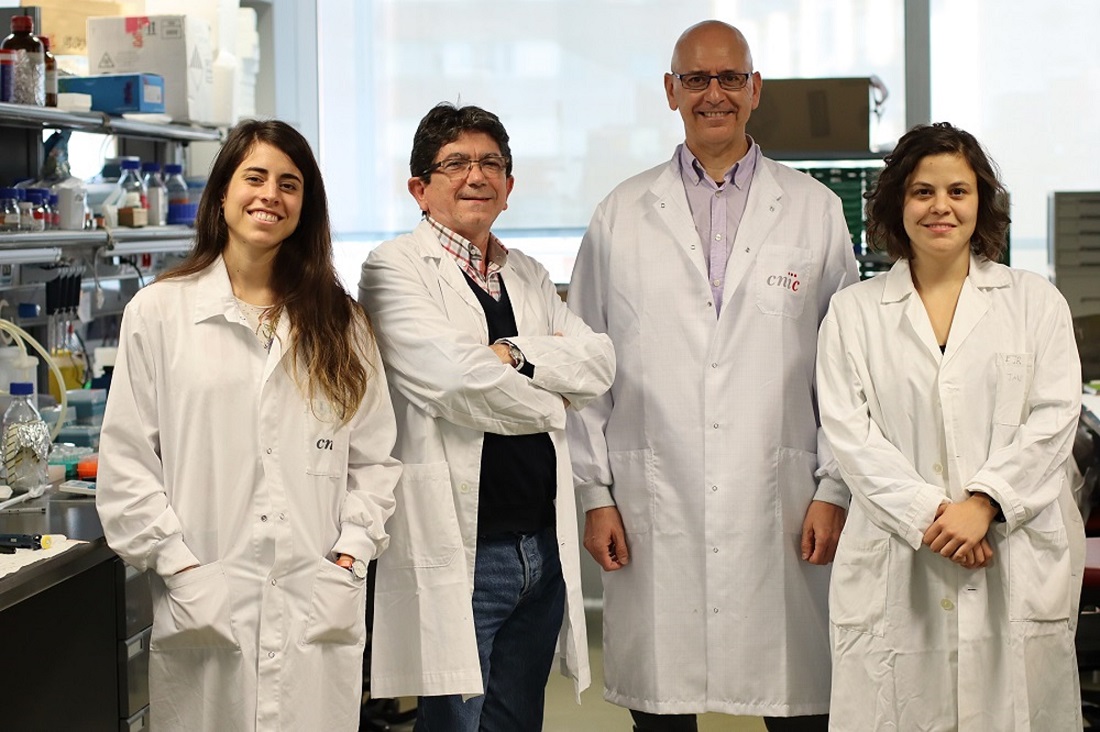Nature Communications: Blocking hypertension with antihypertensive drugs prevents the development of a lethal disease
The study results, published in the journal Nature Communications, identify several proteins implicated in this disease
Researchers at the Centro Nacional de Investigaciones Cardiovasculares (CNIC) and the Consejo Superior de Investigaciones Científicas (CSIC) have discovered that effective control of high blood pressure with antihypertensive drugs prevents the development of aortic intramural hematoma (IMH), a serious and potentially lethal disease. The research has also identified specific proteins implicated involved in the disease, and the authors have generated a preclinical model for the study of intramural hematoma that will useful for evaluating possible pharmacological treatments. The study, published in Nature Communications, was co-directed by Dr. Miguel Campanero, of the Instituto de Investigaciones Biomédicas Alberto Sols (CSIC), and CNIC group leader Dr. Juan Miguel Redondo.
An IMH is an accumulation of blood within the wall of the aorta in the absence of dissection of the intimal layer (the innermost layer, in contact with the circulating blood). At early stages, an IMH can reabsorbed spontaneously. However, in the long-term, IMH more frequently progresses to aneurysm, which is a dilatation or anomalous swelling of a portion of the aorta that can result in vessel rupture and death.
According to Dr. Redondo, both IMH and aneurysm are indolent diseases that cause very mild or no symptoms early on. But, in the words of Dr. Campanero, the associated risk of sudden rupture “requires early and precise diagnosis, rigorous monitoring after detection, and appropriate treatment.” Because there are no validated pharmacological therapies able to prevent harmful disease progression, surgery is the only effective treatment, especially for larger hematomas and those located in the initial portion of the aorta. However, surgery is not free of risk, and the study authors emphasize that “it is essential to identify the mechanisms underlying IMH formation in order to develop pharmacological treatments able to efficient block catastrophic progression.”
The researchers have generated an animal model that accurately reproduces many of the characteristics of the human disease and has allowed the research team to conduct an in-depth investigation of the molecular mechanisms underlying the origin and progression of IMH. This research has revealed that one of the triggers of this disease is high blood pressure. In the words of Dr. Campanero, “We discovered that mice engineered to lack the protein Rcan1 during adulthood are extraordinarily sensitive to the formation of IMH in the aorta and to subsequent vessel rupture in response to a range of stimuli that increase blood pressure.” Moreover, as described by Dr. Redondo, “our study shows that various drugs widely used to reduce blood pressure in patients and mice completely block the formation of IMH in the preclinical model we have generated.”
Molecular mechanisms
The analysis of the molecular mechanisms underlying IMH revealed that the induction of Rcan1 deficiency in the cells of the blood vessel wall activates a protein called myosin light chain (MLC), which is involved in vessel formation. According to the authors, the study shows that “pharmacological inhibition of MLC activation effectively prevents IMH formation.”
The researchers have generated a preclinical model of intramural hematoma that will help in the evaluation of drugs for its prevention and treatment
Working with the CNIC Proteomics Unit, the research team conducted a screen to identify proteins able to interact with Rcan1. This analysis identified 11 proteins that specifically interact with Rcan1, and according to Dr. Redondo, “one of them, the protein Gsk3-ß, is a strong candidate as a mediator IMH formation.” Moreover, as Dr. Campanero explained, “Gsk3-ß inhibitors such as lithium chloride very efficiently prevent MLC activation in the aortic wall. Therefore we are now testing the ability of this strategy to block the formation and progression of IMH."
Gsk3-ß inhibitors have been used for many years to treat a number of psychiatric disorders, and the researchers are therefore interested in comparing the incidence of IMH, aortic dissection, and aneurysm in patients treated with these compounds with that in the general population. The authors conclude that “Now we have a good preclinical model of IMH, we can analyze the mechanism underlying its catastrophic progression in detail and begin to evaluate drugs able to slow or stop it.”
The study received funding from the Ministery for Science, Research, and Universities, the Madrid regional government, the CSIC, the ProCNIC Foundation, the Marfan Foundation (USA), the Marató Foundation, and the CIBER cardiovascular research network (CIBER-CV) linked to the Instituto de Salud Carlos III.











